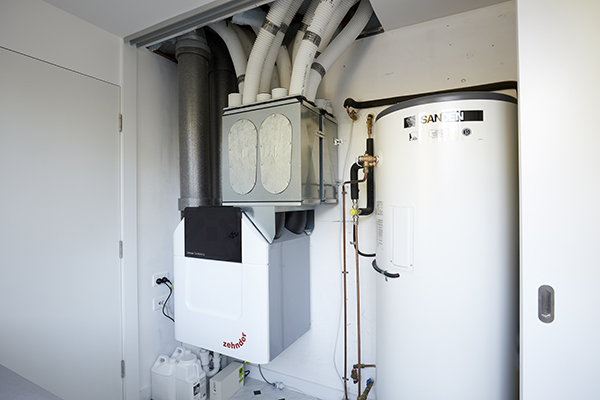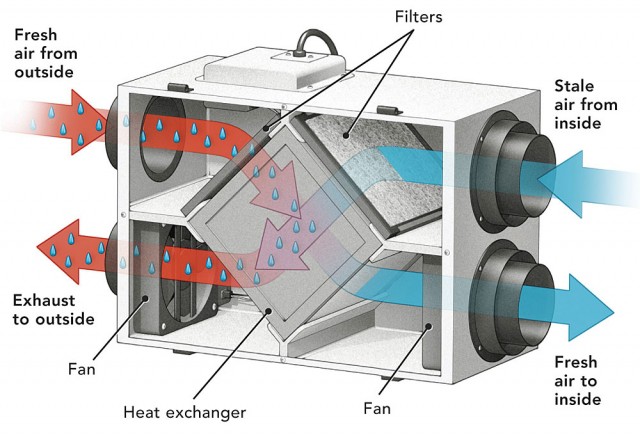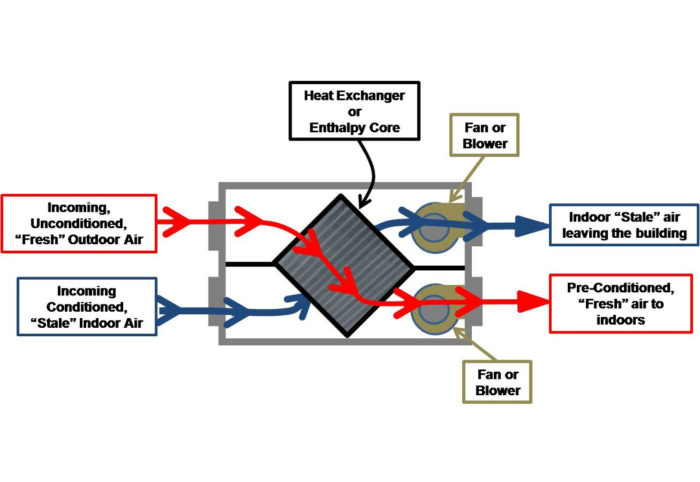Expert Tips to Maximize HRV Output
Wiki Article
The All-Inclusive Guide to the Uses of Heat Recovery Ventilation in Modern Structures
Heat Recovery Ventilation (HRV) systems stand for a substantial innovation in building modern technology (HRV Heat Recovery Ventilation). They provide a technique for exchanging stagnant interior air with fresh outdoor air while lessening energy loss. This approach not just boosts indoor air top quality however likewise contributes to power effectiveness in both household and commercial structures. Understanding the various applications and advantages of HRV can disclose its essential function in contemporary style and sustainability efforts. The ramifications of this modern technology deserve checking out additionallyUnderstanding Heat Recovery Ventilation Equipments

Although many contemporary buildings prioritize energy performance, understanding warm recuperation ventilation (HRV) systems is crucial for maximizing interior air quality and reducing energy consumption. HRV systems function by transferring warm from stagnant interior air to inbound fresh air, properly keeping comfy interior temperatures while reducing energy loss. These systems consist of a warmth exchanger, fans, and ductwork that assist in the flow of air. Throughout wintertime, HRV devices catch and recycle warmth from the outward bound air, while in summer season, they can aid cool inbound air. By constantly trading air, HRV systems also minimize moisture and the focus of indoor pollutants. Proper installation and upkeep of HRV systems are essential for their efficiency and performance in boosting total structure performance and comfort.
Benefits of Heat Recovery Ventilation
Heat recovery ventilation systems supply countless benefits that improve both power effectiveness and indoor air quality in modern-day structures. By recording and recycling power from exhaust air, these systems significantly decrease cooling and heating prices, causing lower power usage. In addition, they keep a steady circulation of fresh exterior air, reducing the risk of interior air contaminants and irritants. This continuous exchange assists regulate moisture levels, preventing mold development and making sure a much healthier living atmosphere. Furthermore, HRV systems contribute to sustainability objectives by reducing overall carbon impacts. Their capacity to maximize air flow without compromising thermal convenience makes them an important enhancement to contemporary structure style, promoting both financial and ecological advantages.Applications of HRV in Residential Structures
As homeowners progressively prioritize power effectiveness and interior air top quality, the applications of heat recuperation ventilation (HRV) systems in residential buildings have actually come to be extra prevalent. HRV systems are especially beneficial in securely secured homes, where maintaining fresh air blood circulation is necessary for preventing wetness build-up and indoor pollutants. They efficiently move heat from outbound stale air to inbound fresh air, lowering energy expenses connected with heating & cooling. In addition, HRVs can enhance comfort levels by regulating moisture and temperature level. They are additionally versatile for different household layouts, including single-family homes and multi-unit buildings. Generally, incorporating HRV systems sustains sustainable living practices while guaranteeing a much healthier indoor atmosphere for residents.HRV in Commercial and Industrial Settings
In commercial and commercial setups, the execution of warmth recuperation air flow (HRV) systems has actually ended up being progressively vital for maximizing power performance and keeping air quality. These systems efficiently move warmth from exhaust air to inbound fresh air, minimizing the requirement for additional heating or cooling. This not only lowers power expenses yet additionally contributes to sustainability initiatives. Industries such as production, warehousing, and click here for info workplace buildings benefit greatly from HRV systems, as they aid control temperature and humidity levels, ensuring a comfy and effective setting. HRV systems aid in removing impurities and excess wetness, boosting indoor air quality. As guidelines around air quality end up being stricter, the fostering of HRV innovation is likely to expand, making it a critical part of contemporary commercial and commercial facilities.Future Patterns in Heat Recovery Ventilation Technology

Often Asked Inquiries
Just How Does Heat Recovery Ventilation Effect Indoor Air High Quality?
Heat recovery ventilation greatly improves indoor air quality by continuously trading stagnant indoor air with fresh outside air while recouping energy. This procedure reduces toxins, maintains perfect humidity degrees, and assures a much healthier atmosphere for residents.Can HRV Systems Be Set Up in Existing Structures?
HRV systems can certainly be mounted in existing buildings. Retrofitting may call for adjustments to ductwork and ventilation layouts, yet it substantially improves energy performance and interior air quality, making it a viable alternative for older frameworks.What Maintenance Is Needed for HRV Solutions?

Exist Details Climates Where HRV Is Extra Efficient?
Heat recovery ventilation systems are especially Extra resources effective in environments with significant temperature distinctions in between periods. These systems maximize power effectiveness by recuperating warm from visit exhaust air, making them perfect for both cool and moderately cozy settings.Just How Do HRV Solutions Affect Energy Costs?

Report this wiki page